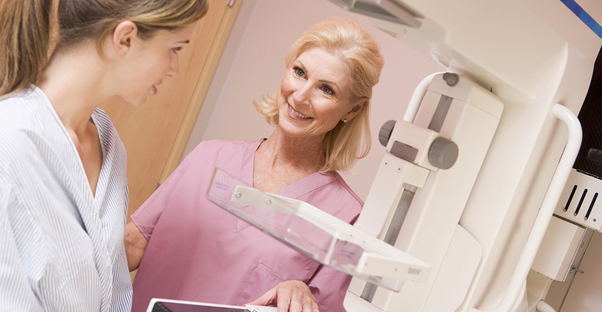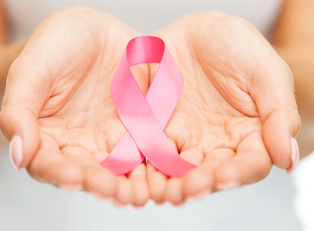A mammogram is an x-ray of the breast. While screening mammograms are routinely administered to detect breast cancer in women who have no apparent symptoms, diagnostic mammograms are used after suspicious results on a screening mammogram or after some signs of breast cancer alert the physician to check the tissue. Such signs may include:
- A lump
- Breast pain
- Nipple discharge
- Thickening of skin on the breast
- Changes in the size or shape of the breast
A diagnostic mammogram can help determine if these symptoms are indicative of the presence of cancer.
As compared to screening mammograms, diagnostic mammograms provide a more detailed x-ray of the breast using specialized techniques. They are also used in special circumstances, such as for patients with breast implants.
What’s Involved in a Diagnostic Mammogram?
If your doctor prescribes a diagnostic mammogram, be aware that it will take longer than a normal screening mammogram, because more x-rays are taken, providing views of the breast from multiple vantage points. The radiologist administering the test may also zoom in on a specific area of the breast where there is a suspicion of an abnormality. This will give your doctor a better image of the tissue to arrive at an accurate diagnosis. In addition to finding tumors that are too small to feel, mammograms may also spot ductal carcinoma in situ (DCIS). These are abnormal cells in the lining of a breast duct, which may become invasive cancer in some women.
Are Mammograms Reliable?
The ability of a mammogram to detect breast cancer may depend on the size of the tumor, the density of the breast tissue, and the skill of the radiologist administering and reading the mammogram. Mammography is less likely to reveal breast tumors in women younger than 50 years than in older women. This may be because younger women have denser breast tissue that appears white on a mammogram. Likewise, a tumor appears white on a mammogram, making it hard to detect.
The main risk of mammograms is that they aren’t perfect. Normal breast tissue can hide a breast cancer so that it doesn't show up on the mammogram. This is called a false negative. And mammography can identify an abnormality that looks like a cancer, but turns out to be normal. This "false alarm" is called a false positive. Besides worrying about being diagnosed with breast cancer, a false positive means more tests and follow-up visits, which can be stressful. To make up for these limitations, more than mammography is often needed. Women also need to practice breast self-examination, get regular breast examinations by an experienced health care professional, and, in some cases, also get another form of breast imaging, such as breast MRI or ultrasound.




